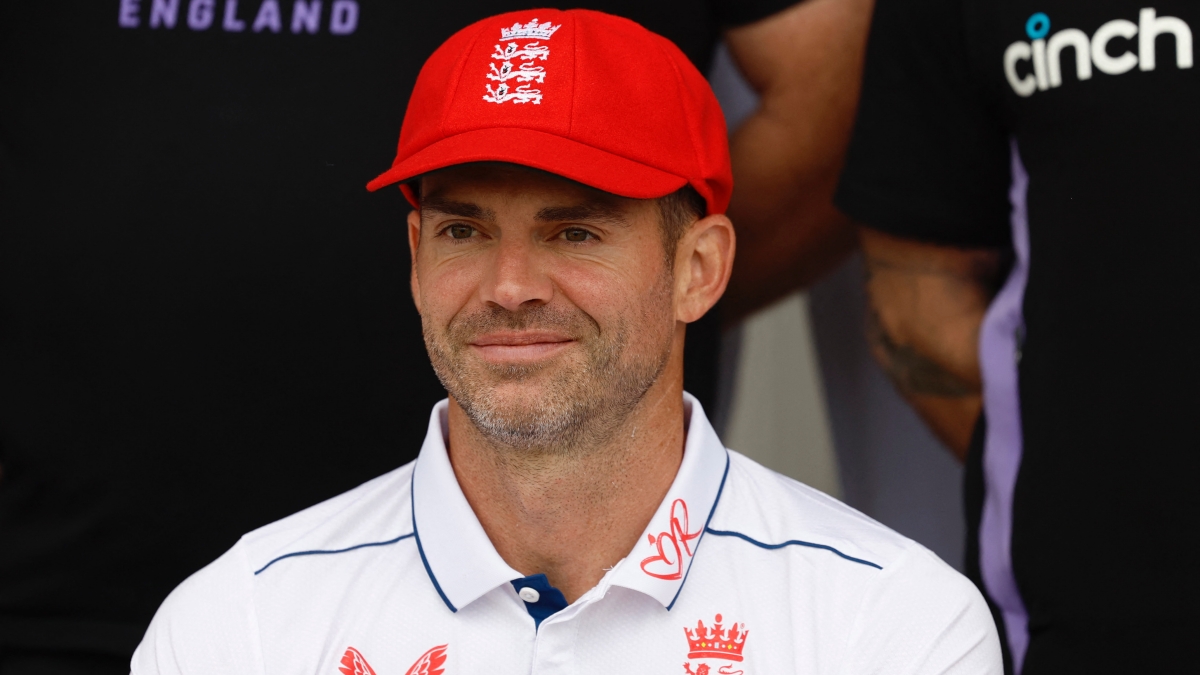As James Anderson readies to run up and bowl for the last time in a Test at Lord’s, where it all began in 2003, it comes with the knowledge that he continues to feel fit at 42 and the decision to step away is hardly his. As the Bazball era continues and prepares for the future, especially with the Ashes next year, Anderson is not in the plans.
“I still feel as fit as I ever have, like I’m bowling as well as I ever have,” he said on Monday. “My record has got much better since turning 35. I still think I could do a job. But at the same time, I understand that it has to end at some point, and I completely accept - completely understand - their reasoning behind it.”
There is romanticism in Anderson’s debut venue and fittingly for his last - the Lord’s. While the Mecca of cricket hasn’t treated two of its most celebrated servants - Sachin Tendulkar and Brian Lara - kindly, Anderson has reaped benefits on the hollowed ground.
Of his 700 career Test wickets, 119 have come at this venue alone, or 17 percent, with the majority while darting down the Pavilion End. His name appears on the honours board seven times, including after achieving career-best figures of 7/42 against West Indies in 2017. The first of those wickets took him to 500 career dismissals.
Sitting on 700 Test wickets, there is a target in sight and given his exploits over the last two decades and at the venue, it would be fair expectations. Shane Warne’s tally of 708 wickets can be surpassed with chances of overcast conditions and returns of eight scalps in the latest outing.
Impact Shorts
More ShortsFor those in attendance for the first Test between England and West Indies, it will be an opportunity to bid goodbye to one of the best fast bowlers the game has produced. There have been legendary seamers in cricket history with literal body-breaking abilities but maybe none have been so lethal with the swinging deliveries as Anderson has.
His ability to swing the ball, both conventional and reverse, is what set him apart and will remain an everlasting memory. His skill in exploiting even the slightest movement in the air. The wrist position, seam control, and ability to consistently hit the right areas made him a nightmare to deal with.
Wicket on his international debut (in an ODI). Fifer on his Test debut. The early performances showcased his potential and hinted at the illustrious career that lay ahead.
The Lancashire bowler didn’t just shine at home. He was hard to work with in England’s overcast conditions and on the flat decks of the sub-continent. He played 105 Tests at home and took 434 wickets (4 wickets per match). His returns from 32 matches in Asia reaped 92 wickets (nearly 3 wickets per Test).
Anderson’s longevity
In a sport where fast bowlers often succumb to injuries and shortened careers, Anderson has defied the odds. His fitness regimen, adaptability, and constant evolution as a bowler have allowed him to remain at the top of his game well into his late 30s and early 40s.
Anderson has been a mainstay in the England setup and his longevity is one of the highlights. With the 188th Test to be his last, only Sachin Tendulkar played more (200).
“Playing my 188th Test at just short of 42 years old, makes me the most proud and I’m still pushing myself to be the best I possibly can,” he said.
He played under eight different England captains - Nasser Hussain, Michael Vaughan, Andrew Strauss, Kevin Pietersen, Andrew Flintoff, Alastair Cook, Joe Root and now Ben Stokes.
Shoaib Bashir and Rehan Ahmed, his teammates from the Test vs India earlier in the year, weren’t even born when Anderson made his debut!
In the long list of Test dismissals and Anderson’s ‘bunnies’ feature Tendulkar, Azhar Ali, Jaques Kallis, Shane Watson, Brad Haddin, Kumar Sangakkara and MS Dhoni who have all long retired from the longest format and the game itself.
Maybe, for some of the casual watchers of the game, his legacy is not in the number of wickets he took and the longevity but in the way he embraced Test cricket rather than “chasing the dollar” with the advent of T20 leagues galore.
His commitment to the Test format in an era increasingly dominated by shorter forms of the game has been admirable. Anderson’s passion for Test cricket and belief in its importance have helped maintain its relevance and appeal.
Looking ahead, Anderson’s influence on cricket is likely to extend beyond his playing days. His knowledge of the art of fast bowling and his experience at the highest level make him a valuable asset for future generations. Whether as a coach, commentator, or mentor, Anderson’s insights will continue to shape the game.
“I feel so lucky to have played for as long as I have. It feels really special that I get to play for England one more time,” said Anderson.
Maybe more than Anderson himself, we’ve been lucky and privileged to have the England seamer around for this long.


)

)
)
)
)
)
)
)
)



